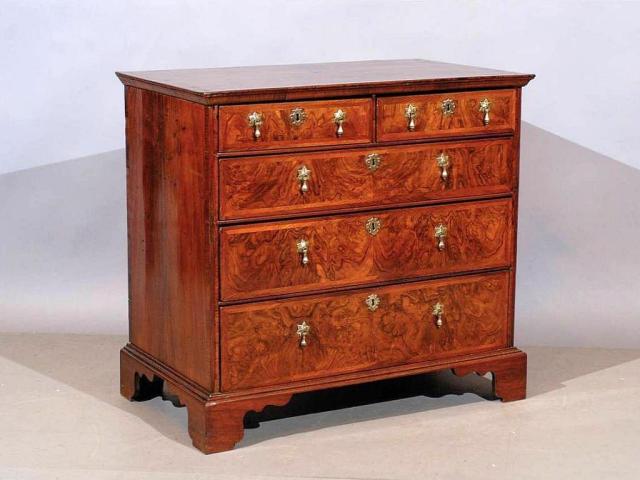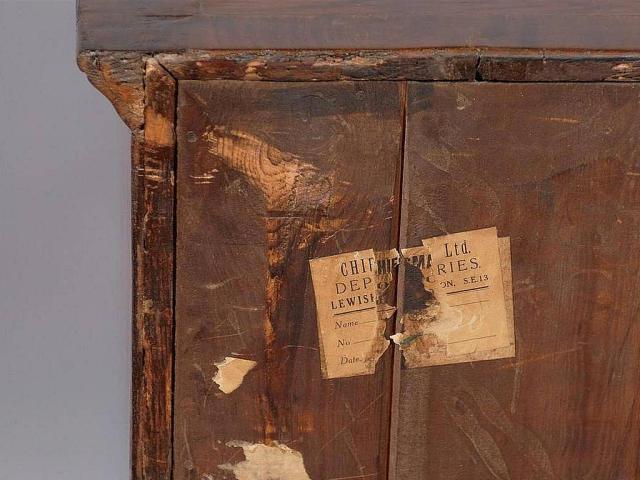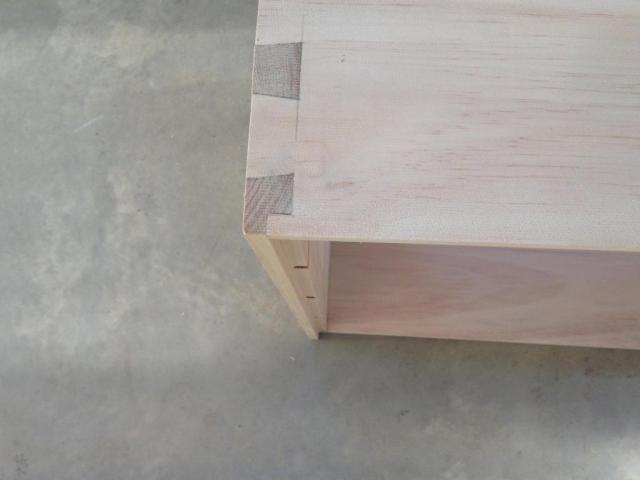I recently came across this early eighteenth-century walnut chest of drawers. It’s of fairly standard form, though the handles are replacements and the base moulding and feet appear to have been added during the third quarter of the century – a common enough modification.
 Fig. 1. Walnut five-drawer chest, circa 1720. (William Word)
Fig. 1. Walnut five-drawer chest, circa 1720. (William Word)
The back of the chest, however, reveals a couple of unusual details (figs. 2 & 3).
 Fig. 2. Replacement backboards. (William Word)
Fig. 2. Replacement backboards. (William Word)
The bracket feet and tongue-and-groove backboards are obvious later additions, but closer inspection of the carcase shows an unusual method of closing the backboards’ rebate in its back edges (fig. 3).
 Fig. 3. Unusual carcase construction. (William Word)
Fig. 3. Unusual carcase construction. (William Word)
The upper rear corners of this chest are mitred where the rebates meet: Figure 4 shows the more common method of addressing the rebates’ juncture.
 Fig. 4. Normal method of finishing the backboards’ rebate.
Fig. 4. Normal method of finishing the backboards’ rebate.
And if that veneer isn’t 7/32″ (5.6mm) thick, I’m not an Irishman!
Jack Plane (an Irishman of some infamy)

It appears, from fig 2 at least, that the blocks to accept any”bun feet” are not visible. would this chest originally have Bun or bracket feet? Would it be possible to post a photo of a chest of equal age to give an example of “proper” configuration? Before the feet and base moulding were added?
LikeLike
Whilst the above chest is just old enough to have been made with (albeit simpler) bracket feet, the fact that it has circa 1760-70 base moulding and brackets, would tend to point to it having previously had bun feet (had it been made with bracket feet originally, it would more than likely have retained them – even if they weren’t quite the latest fashion).
The chest could of course have been the upper chest of a chest-on-chest and the base moulding and bracket feet could be its first set of feet.
A very similar chest, with original base moulding and bun feet (though the handles are later replacements).
JP
LikeLike